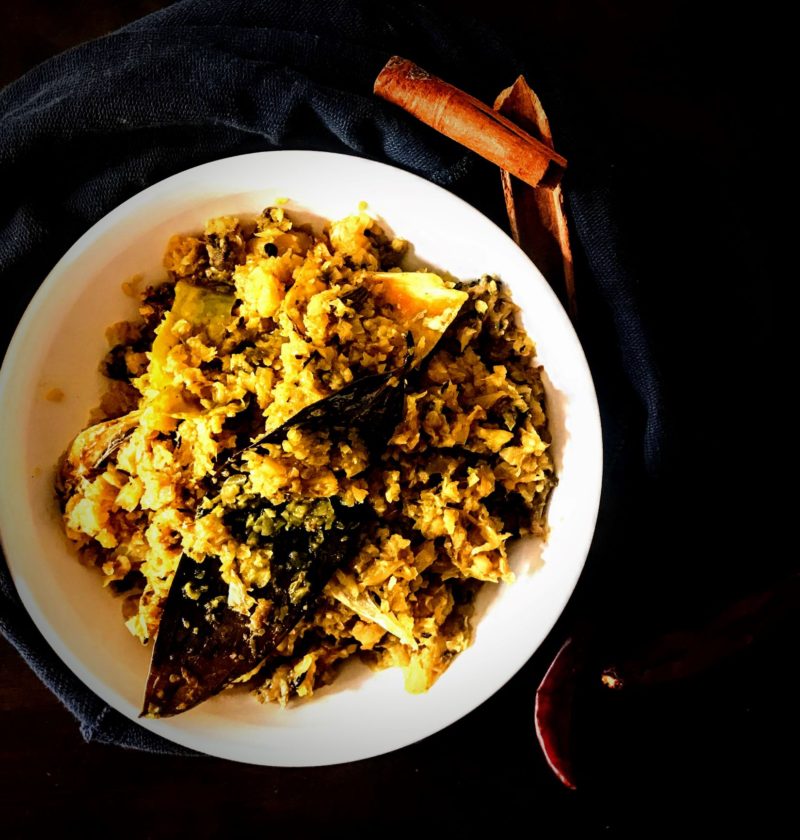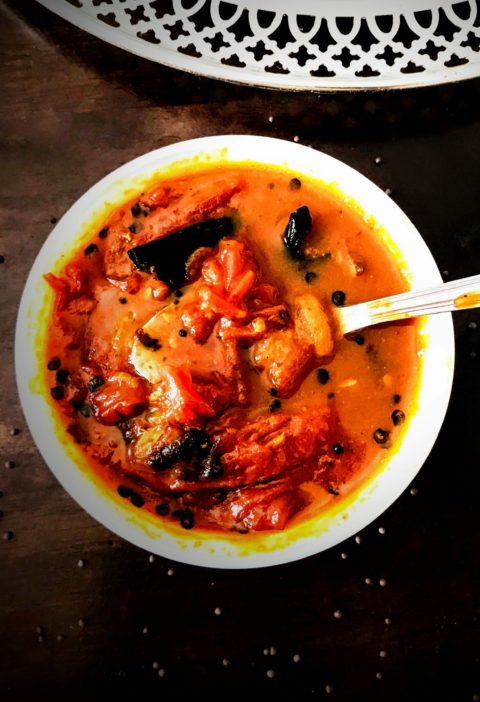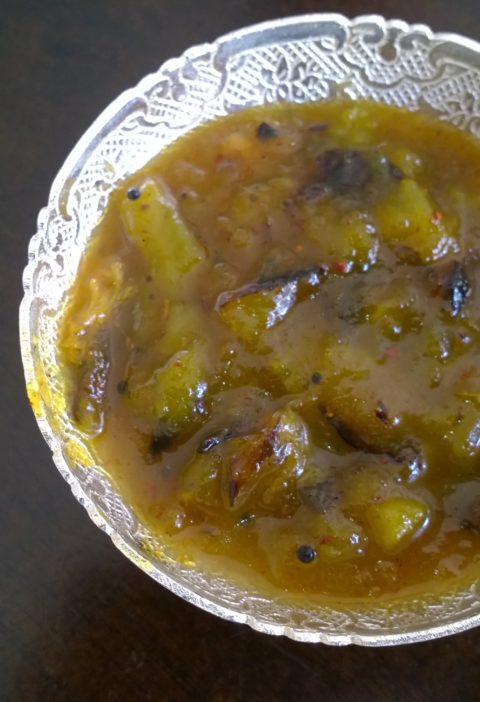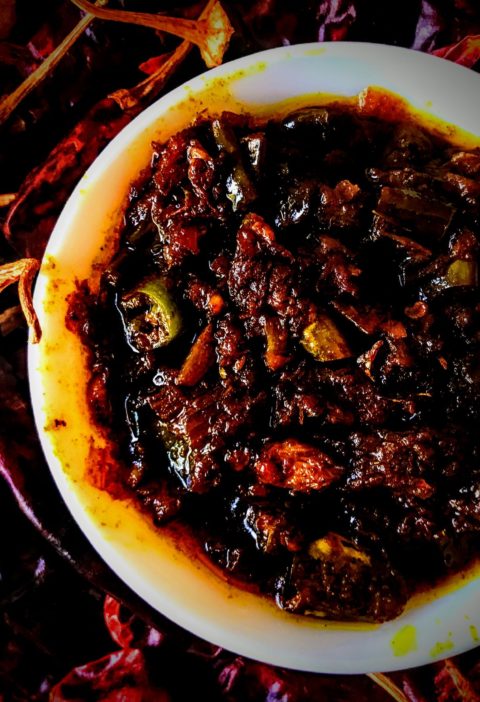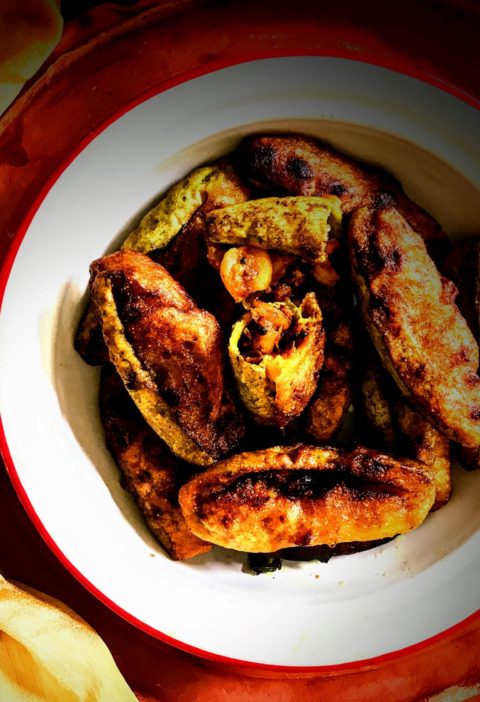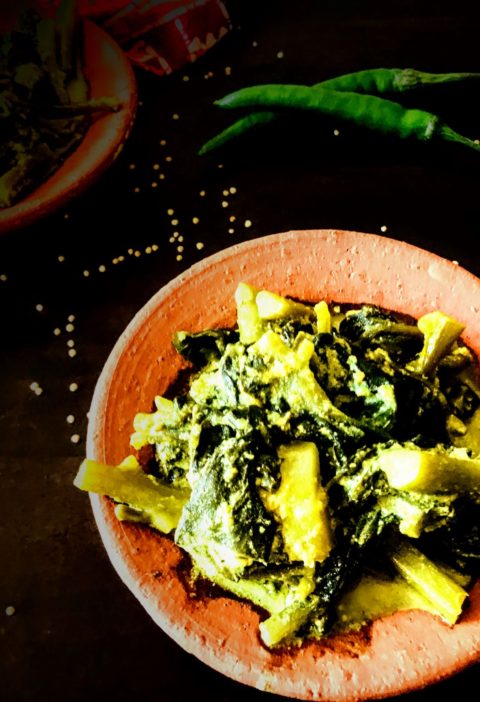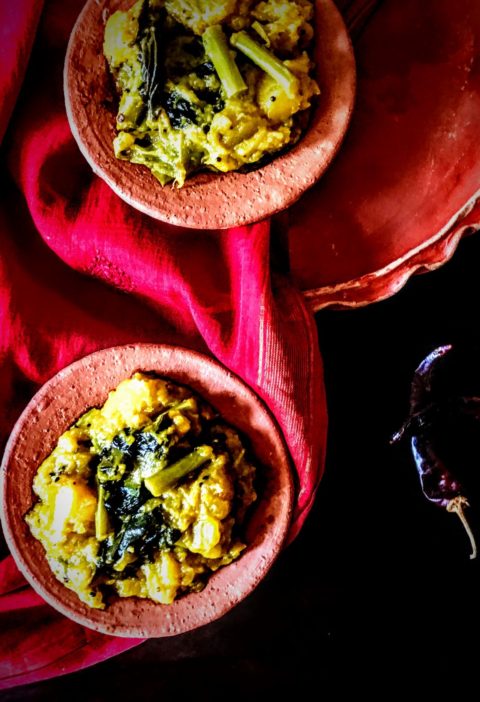It’s been more than a year since I have taken up blogging, and if I analyze thoroughly, the best part of this profession (of-course apart from getting remuneration
This holds true for any recipe I have researched on. But, the most important achievement because of taking up this profession would be, re-connecting with my own cuisine in a special way beyond tasting it.
Yes, I have been a food lover all throughout my life, and have appreciated the taste and effort with each and every morsel. Perhaps, this is the reason why my mother was and is always excited to make me taste her cooking masterpieces, rather than my brother or my father, as they have an indifferent attitude towards any dish prepared in the kitchen.
However, this being said, all these years I have never given any thought to the stories or the logic associated with these sensations put on my plate. I ate, I enjoyed and I forgot about it. But now, as I am spending more time and investing my brain in addition to mouth, I feel like living a story with every bite I take, of the same food which I have been taking throughout my life.
Talking about my own Bengali cuisine and its varieties, the feel of stories pushed me to think that, probably the urge for newness in palate, compounded with the abundance of options owing to the fertile land, had made the food lover Bengalis to innovate in every meal resulting in mouth-watering and flavourful dishes. This not only pleased the feeder’s taste buds, but also because of the uniqueness of the flavours, the dishes went on to became culinary icons, acknowledged by the rest of the world.
This idea of innovation was not only confined to create new dishes. As mentioned in few of my previous posts, the idea of innovation extended to even combining dishes and further enhancing already complete dishes by adding ingredients which take them to a different level, making them unique and special.
And, thus, carrying on the legacy and advancing towards the culinary journey of enhancing a full-fledged vegetarian dish with non-vegetarian ingredients, here I am ready with another darling ghonto called Badhakopy Diye Macher Matha Or Dry Cabbage Preparation With Fish Head (after Lauer Ghonto Diye Macher Matha), where finely chopped or grated cabbage along with diced potatoes are combined with fried fish head pieces. Adding fried fish head pieces to this vegetarian Badhakopy-r Ghonto, makes the dish more special and somehow formal.
And, here is the recipe for Badhakopy Diye Macher Matha.
Recipe: Badhakopy Diye Macher Matha Or Dry Cabbage Preparation With Fish Head
Preparation Time: Around 30 minutes Pressure Cooking Time: Around 12 minutes Cooking Time: 1 hour 14 minutes Equipment Used: A chopper, a pressure cooker, 2 pans, 2 turners, bowls, knife, peeler and chopping board Yield: 4 – 5 servings
Ingredients:
- 1 Rohu or Catla Fish Head cut into halves
- 1 cabbage
- 2 & 3/4 teaspoon salt
- 7/8 teaspoon turmeric powder
- 6 tablespoons & ½ teaspoon mustard oil
- ¼ teaspoon red chilli powder
- 2 cups water
- 2 potatoes diced (25 to 30 pieces from each potato)
- 3 – 4 small cinnamon sticks (1 cm X 0.75 cm each)
- 1 red chilli split into halves
- 1 bay leaf
- 1 teaspoon paanch phoron
- 1 and ½ teaspoon sugar
- 1/3 cup peas
- ½ teaspoon jeera powder or cumin powder
- ½ teaspoon Bengali garam masala powder
- 1 green chilli slit
- 1 inch X 1.5 inch ginger
- ½ teaspoon ghee
- 2 – 3 crushed green cardamoms
Method:
- Take out the fish head from freezer 2-3 hours in advance for thawing
- Once thawed properly, marinate the fish head after adding ½ teaspoon salt, 3/8 teaspoon turmeric powder, ½ teaspoon mustard oil, ¼ teaspoon red chilli powder to the fish head pieces and mixing the ingredients with hand
- Wash the cabbage properly and chop it into fine pieces
- Pressure cook the cabbage with 2 cups water, only till pressure is formed
- Dice the potatoes and peel the peas if you are not using frozen peas
- Heat a non-stick pan
- Add 2 tablespoons mustard oil into the pan
- Add the marinated fish head pieces once the oil is hot and fry them
- By the time if the cabbage is cooked and the pressure is released from pressure cooker, heat another pan and add 4 tablespoons mustard oil
- Once the oil is hot, temper the oil with red chilli, bay leaf, paanch phoron and cinnamon sticks
- Add the diced potato pieces, followed by ½ teaspoon turmeric powder, ½ teaspoon salt, ¼ teaspoon sugar and the peas
- Mix the above ingredients and cover the pan, so the potato cooks on low flame
- In the meantime, break the fish head pieces in the pan which are almost fried
- Remove the pan from heat or switch off the flame after breaking the fish head pieces and keep the pan aside
- In the other pan when the potato pieces are cooked and fried, add the pressure-cooked chopped cabbage
- Mix the cabbage properly with potato pieces and peas, and add jeera powder and garam masala powder to the mix
- Give a stir to the contains of the pan, and cook them after covering the pan till the water is almost evaporated
- When the water is almost evaporated, slit and add a green chilli, followed by grated ginger
- Add the fried fish head pieces and stir and spread them with the turner
- Taste and adjust salt and sugar as per your preference. I have added 1 and quarter teaspoon salt and 1 and 1/4 teaspoon sugar
- Once the dish is completely dry or the water completely evaporates, add ghee and crushed green cardamom pieces
- Switch off the flame and keep the pan covered for 15-20 minutes
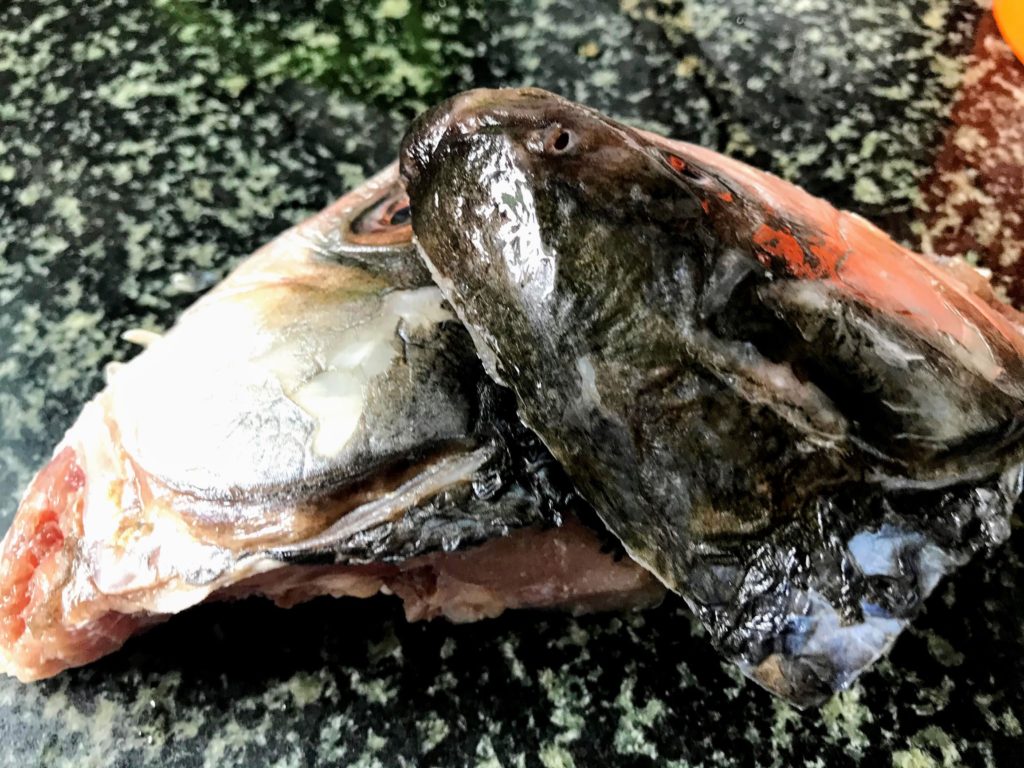
Take out the fish head pieces from refrigerator in advance for thawing.
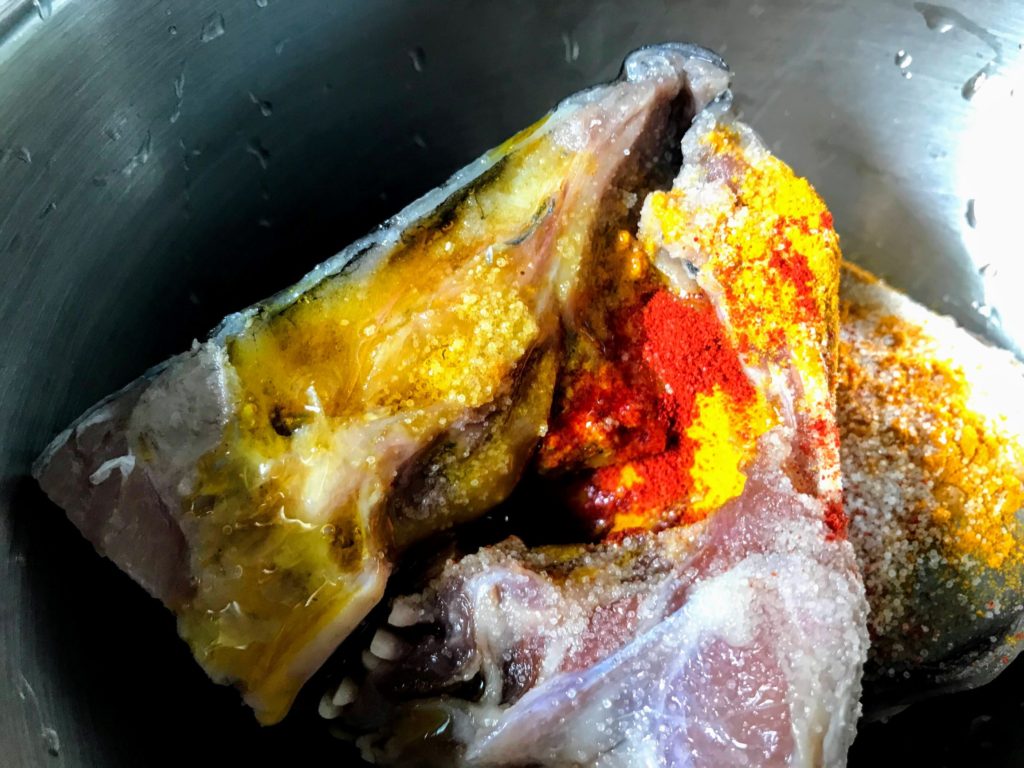
Marinate the fish head after adding salt, turmeric powder, mustard oil, red chilli powder to the fish head pieces and mixing the ingredients with hand
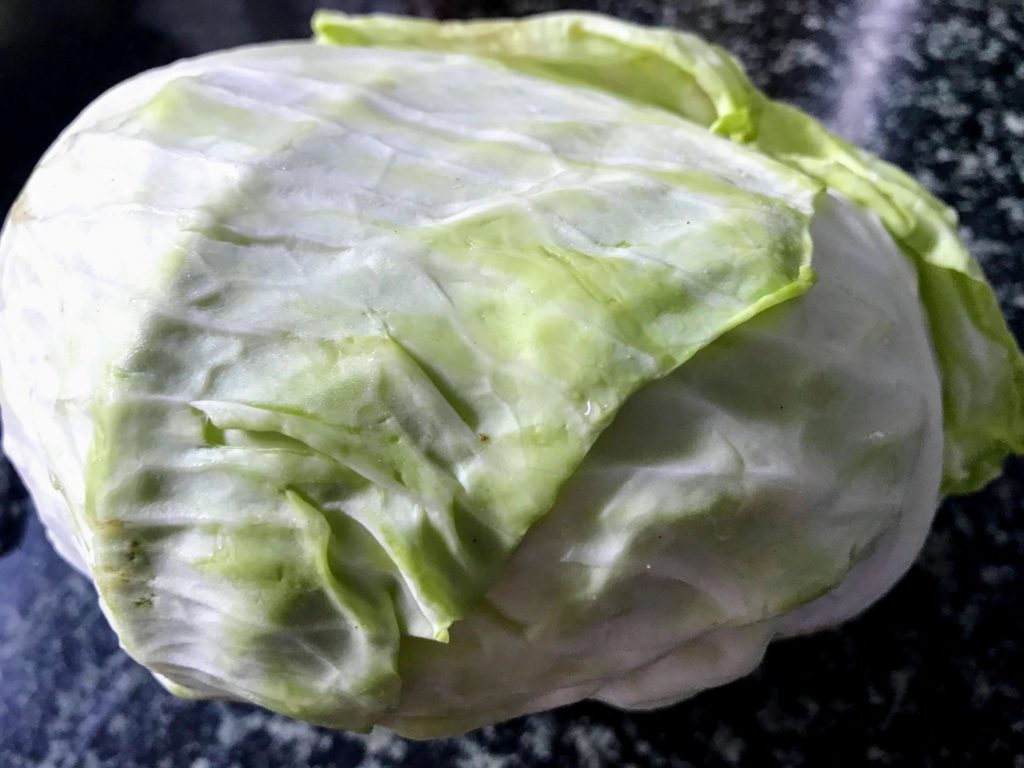
Wash the cabbage properly.
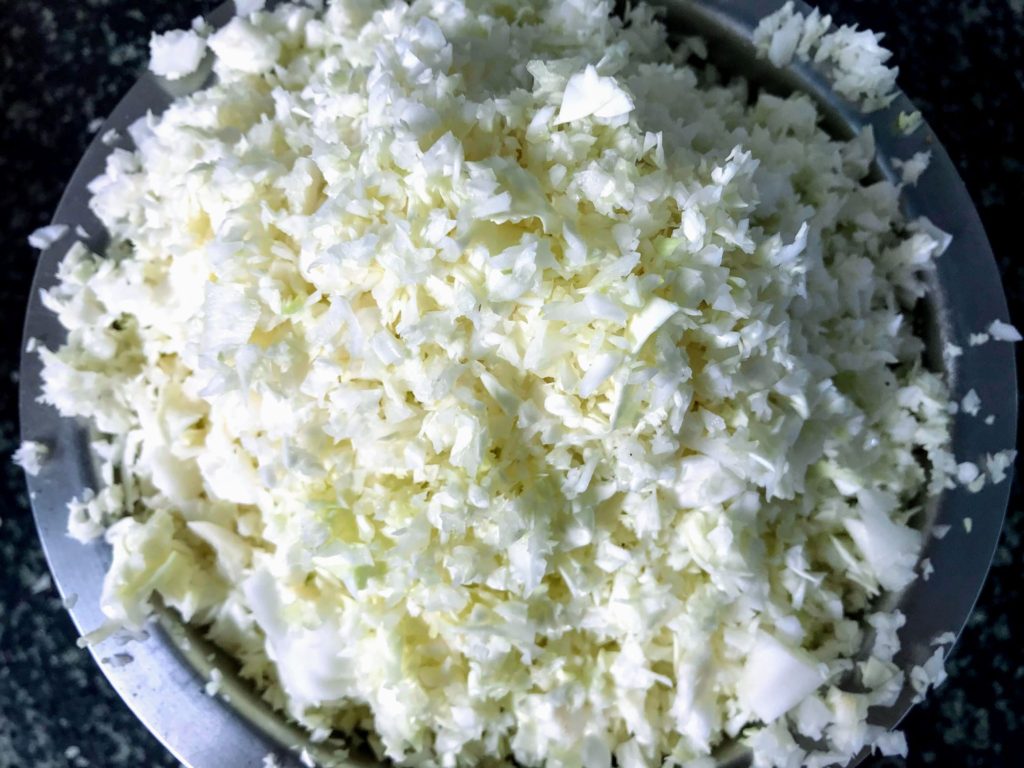
Chop the cabbage into fine pieces and pressure cook the cabbage.
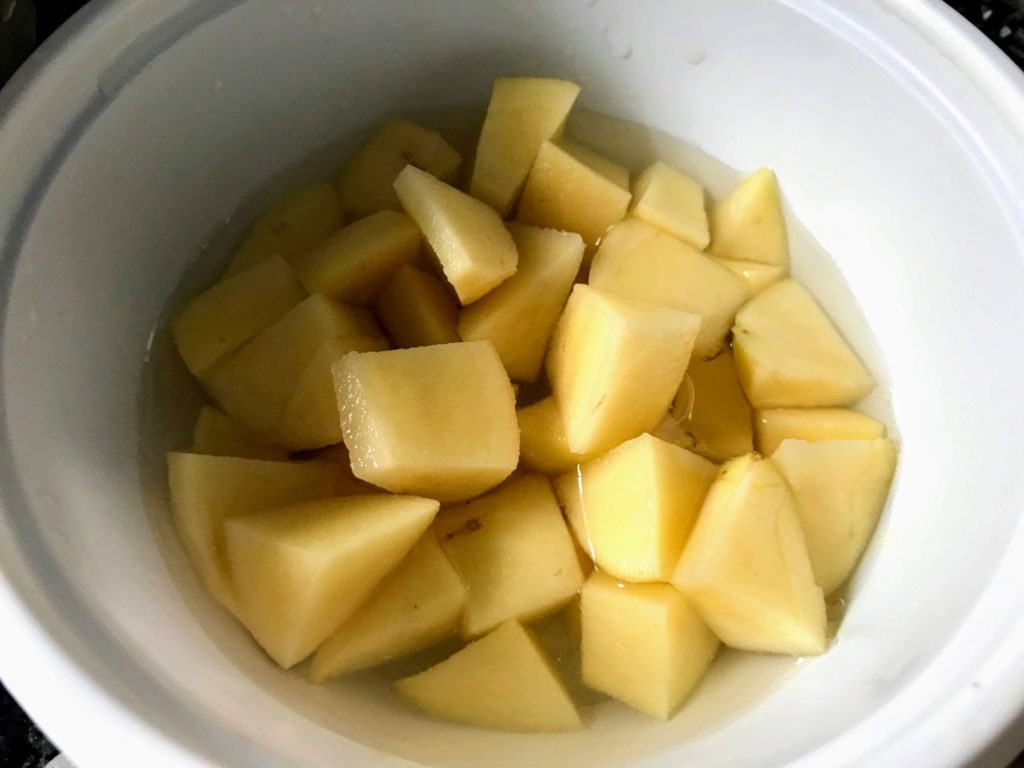
Dice the potatoes and peel the peas.
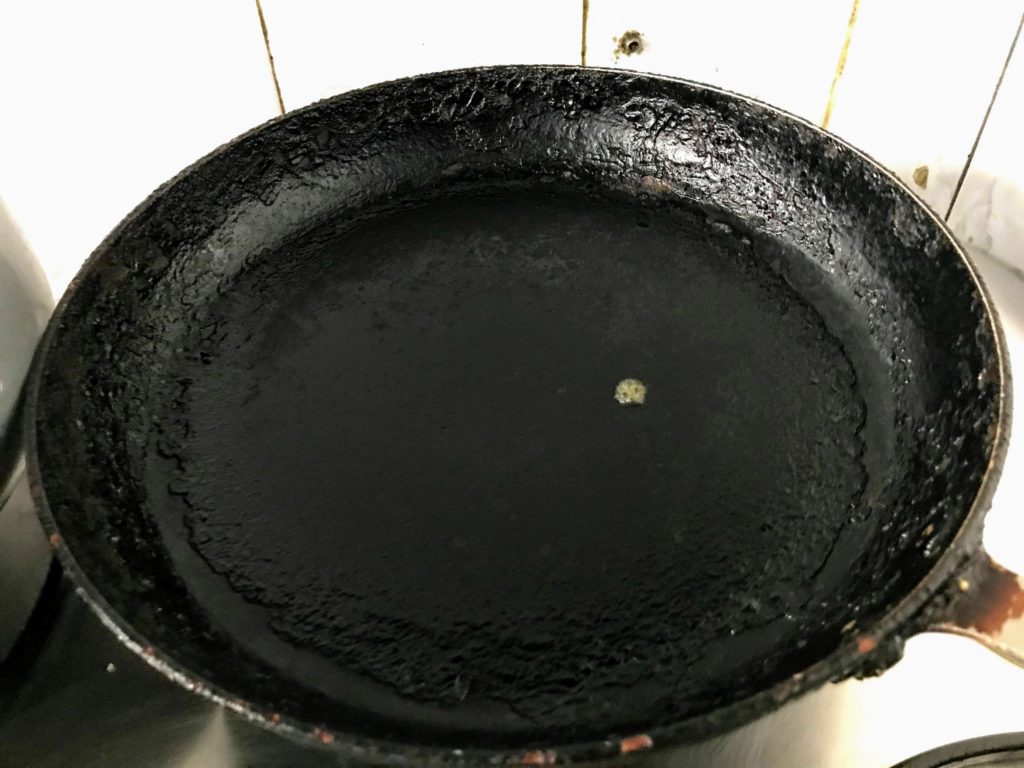
Heat a non-stick pan.
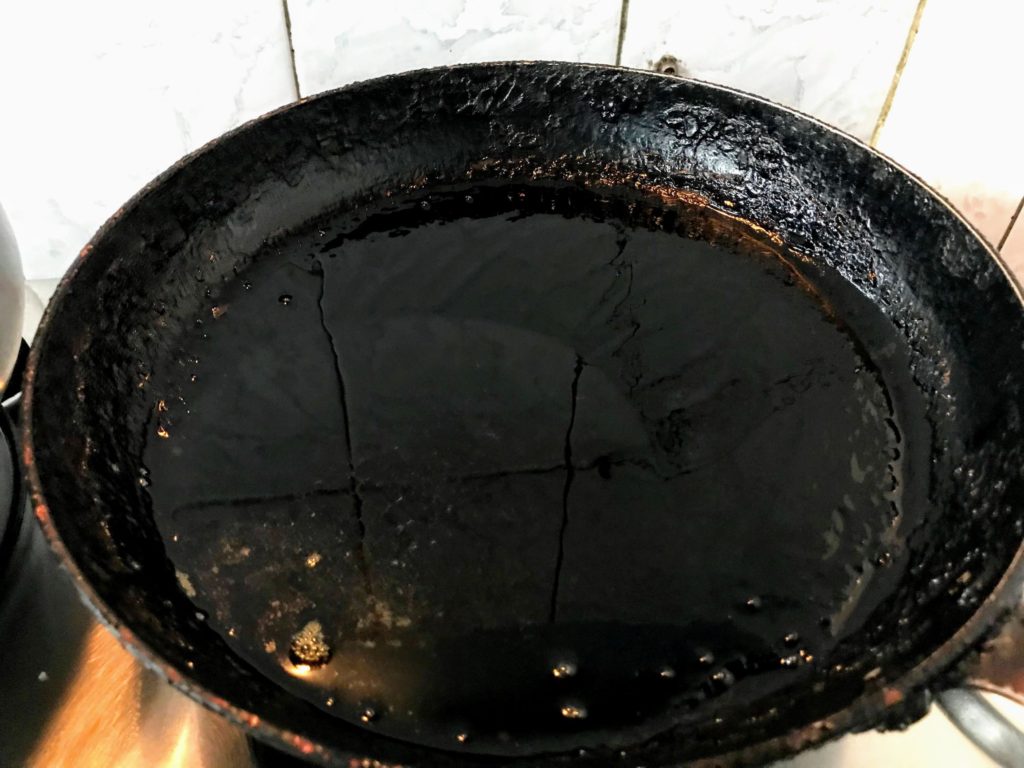
Heat mustard oil.
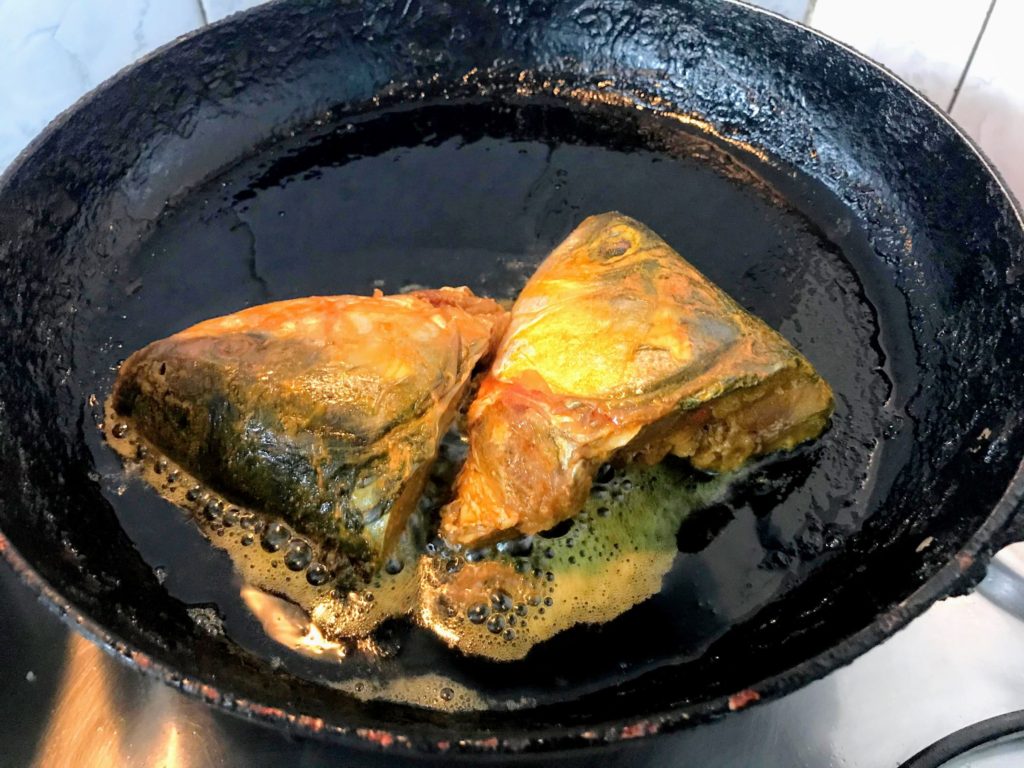
Add the marinated fish head pieces once the oil is hot and fry them.
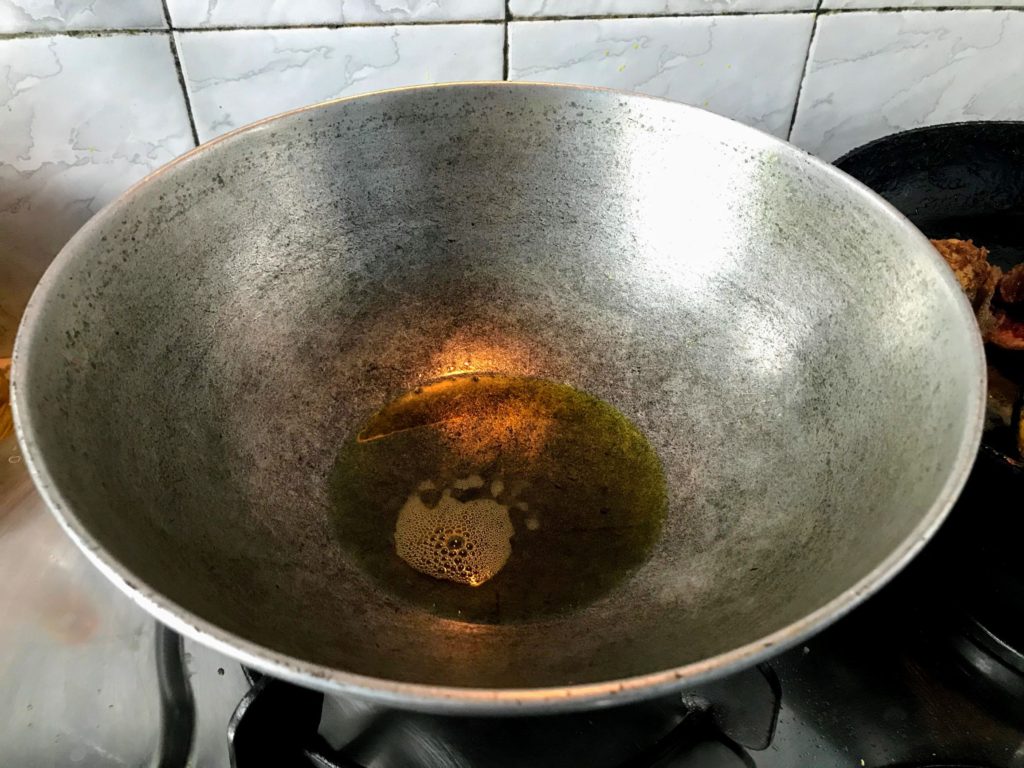
Heat another pan and add mustard oil into the pan.
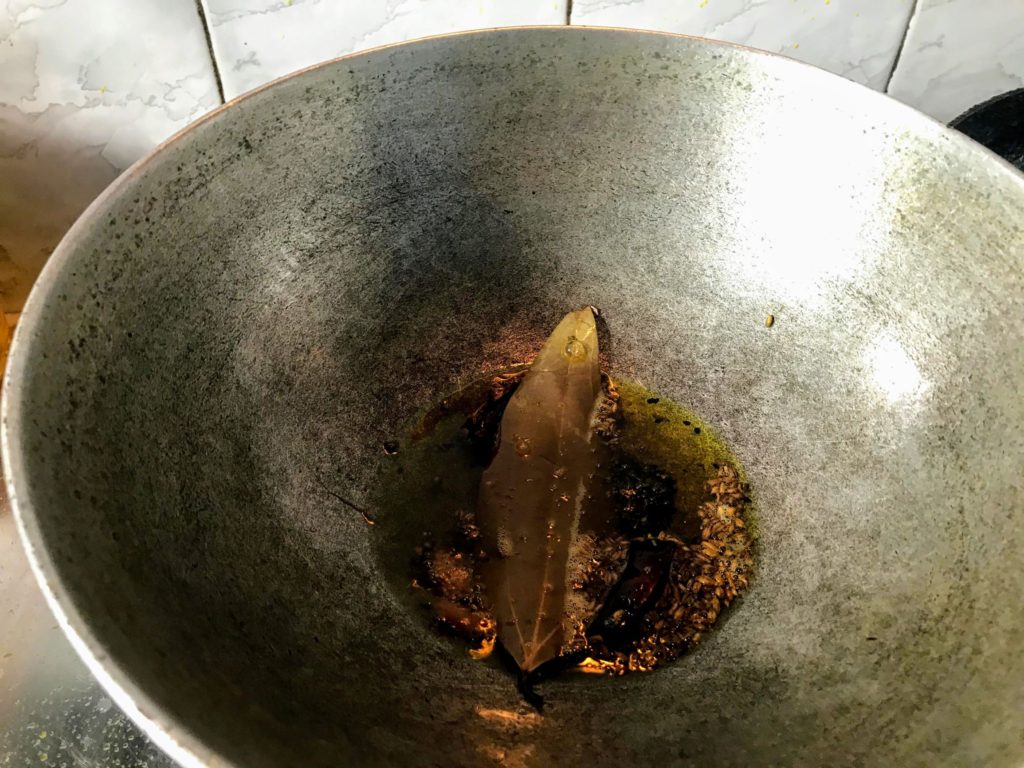
Once the oil is hot, temper the oil with red chilli, bay leaf, paanch phoron and cardamom sticks.
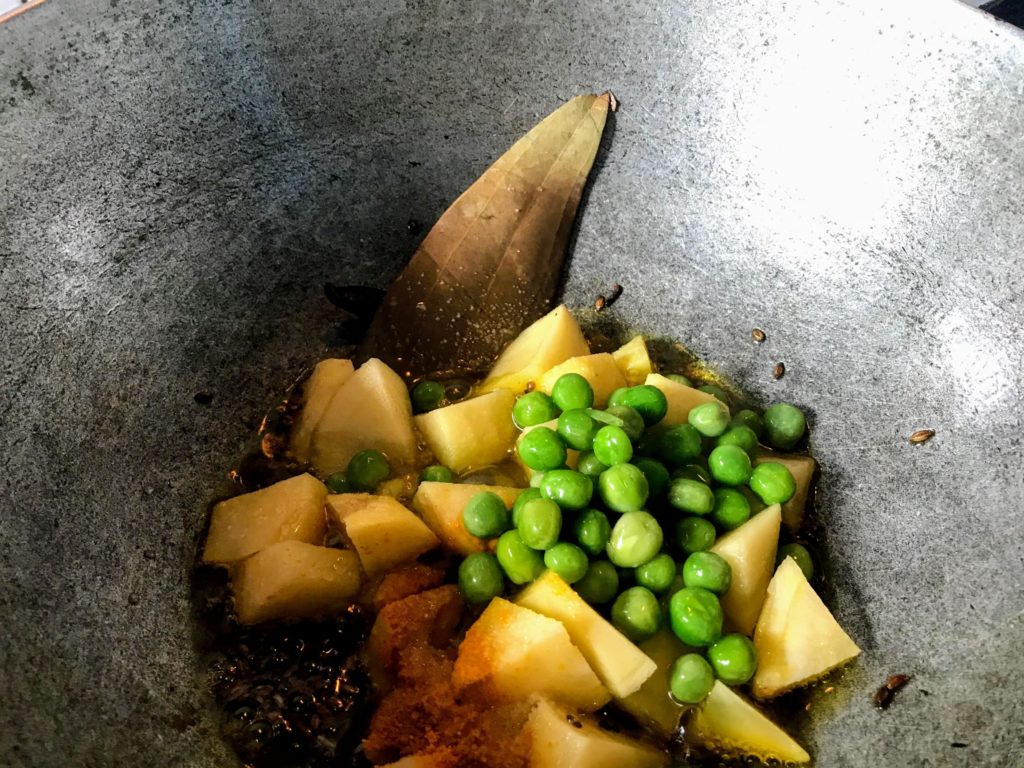
Add the diced potato pieces, followed by turmeric powder, salt, sugar and peas.
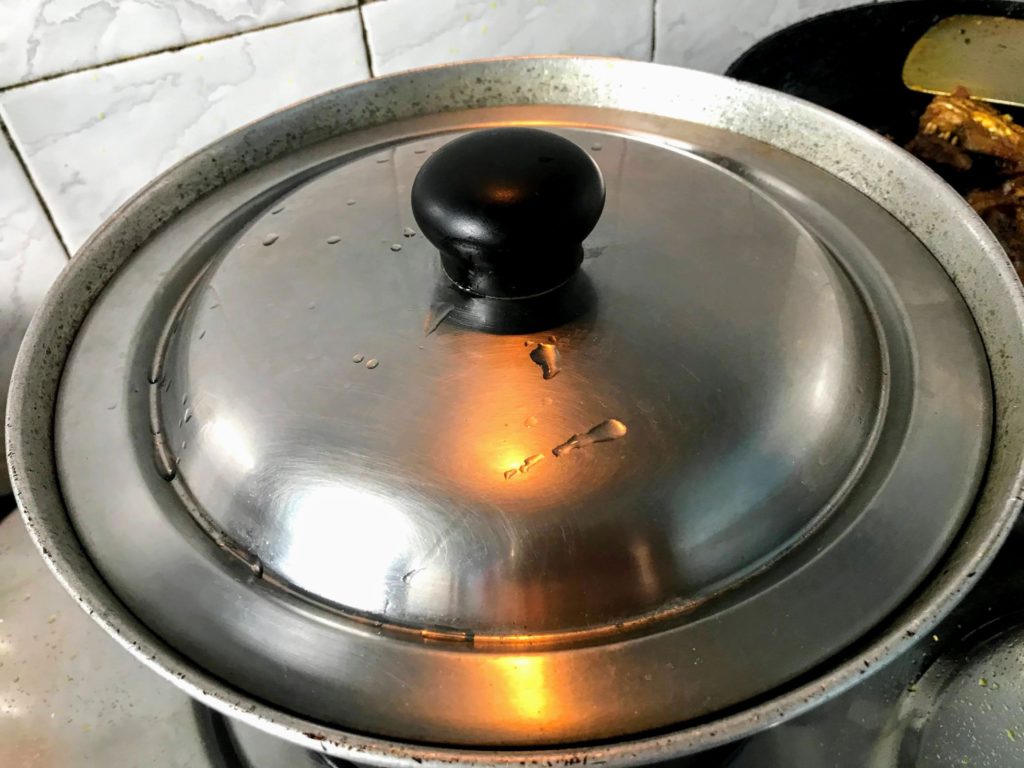
Mix the above ingredients and cover the pan, so the potato cooks on low flame.
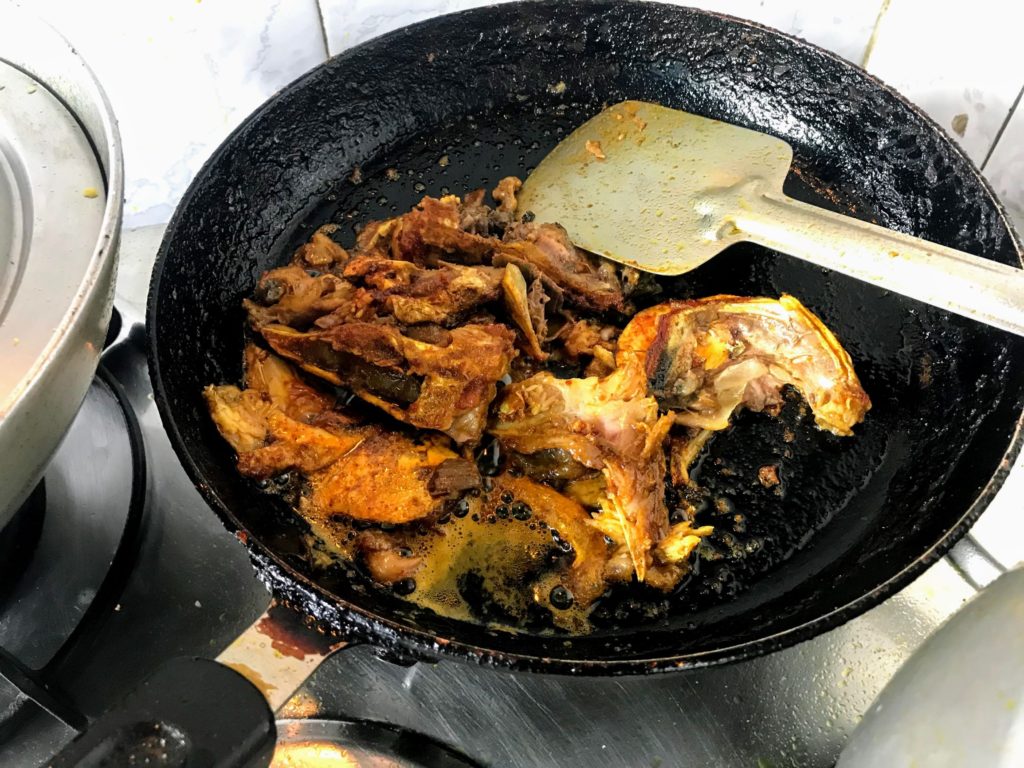
Break the fish head pieces in the pan which are almost fried and switch off the flame.
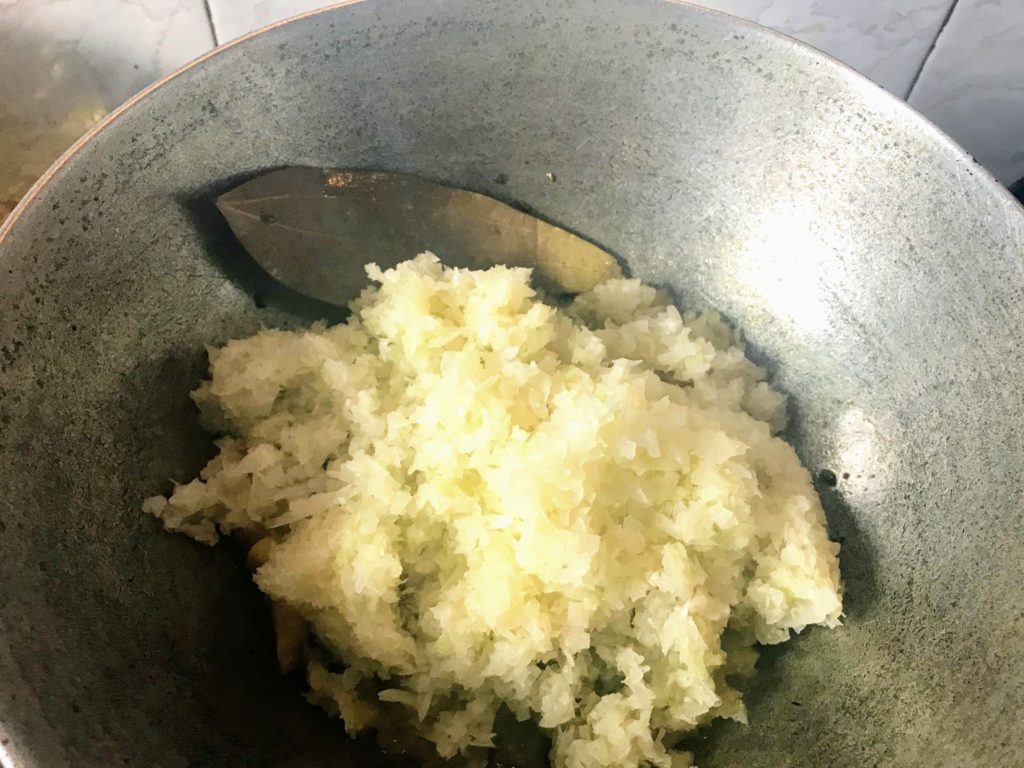
In the other pan when the potato pieces are cooked and fried, add the pressure-cooked chopped cabbage.
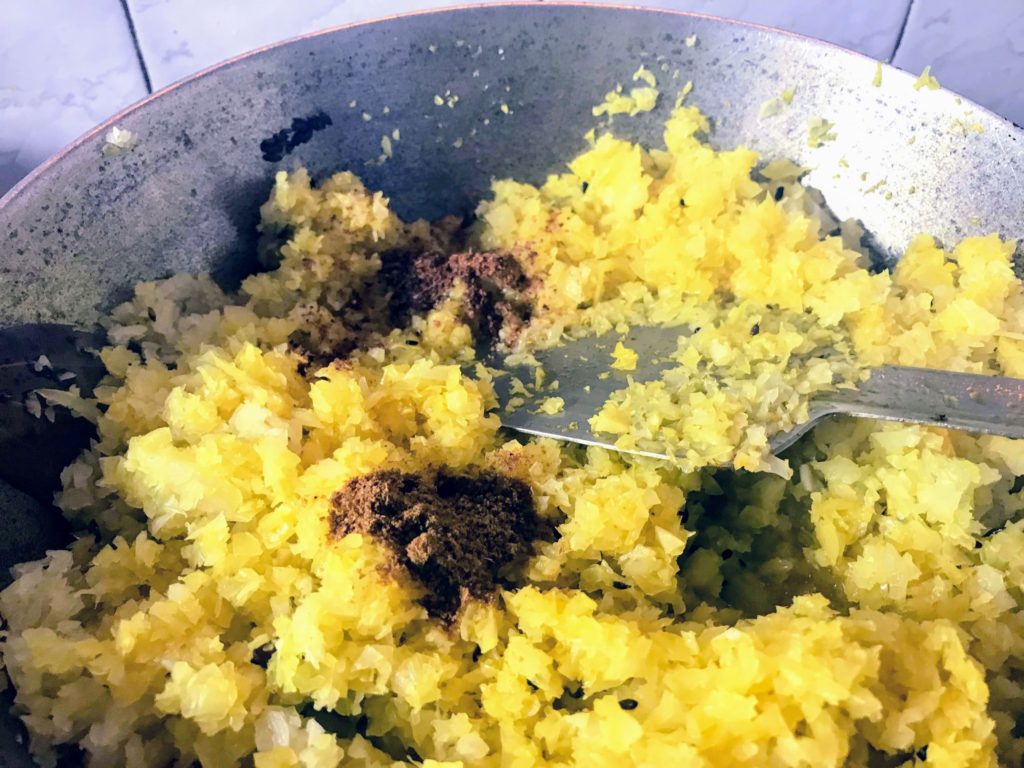
Add jeera powder and garam masala powder. Cook them after covering the pan till the water is almost evaporated
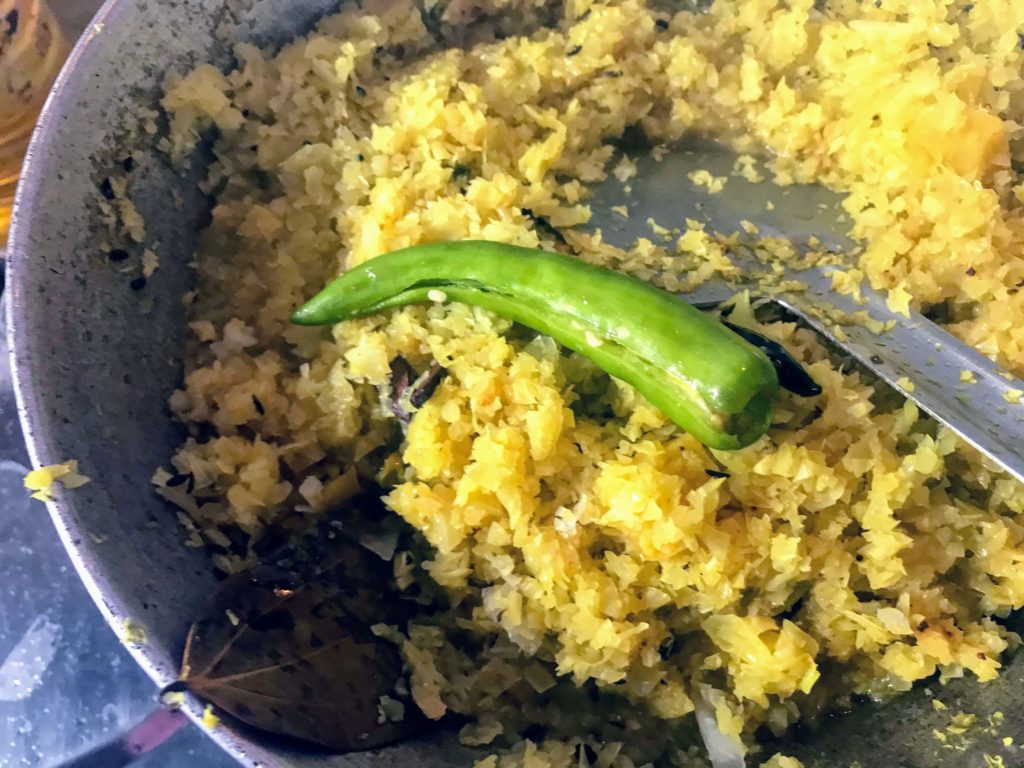
Slit and add a green chilli, followed by grated ginger.
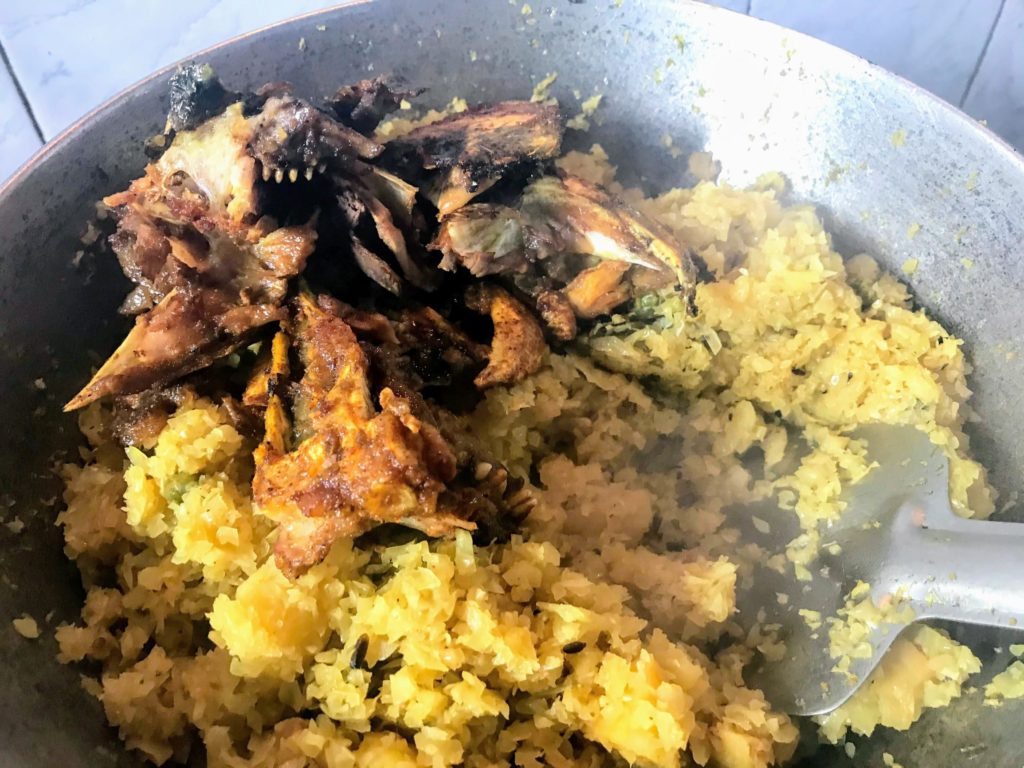
Add the fried fish head pieces and stir and spread them with the turner.
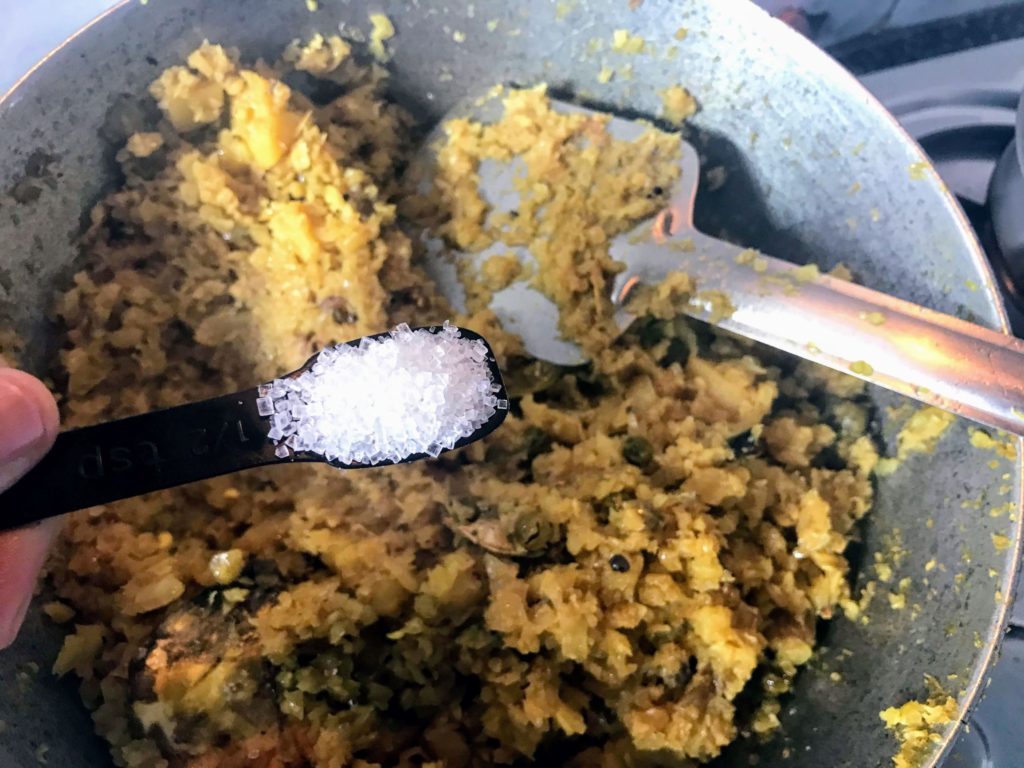
Taste and adjust salt and sugar.
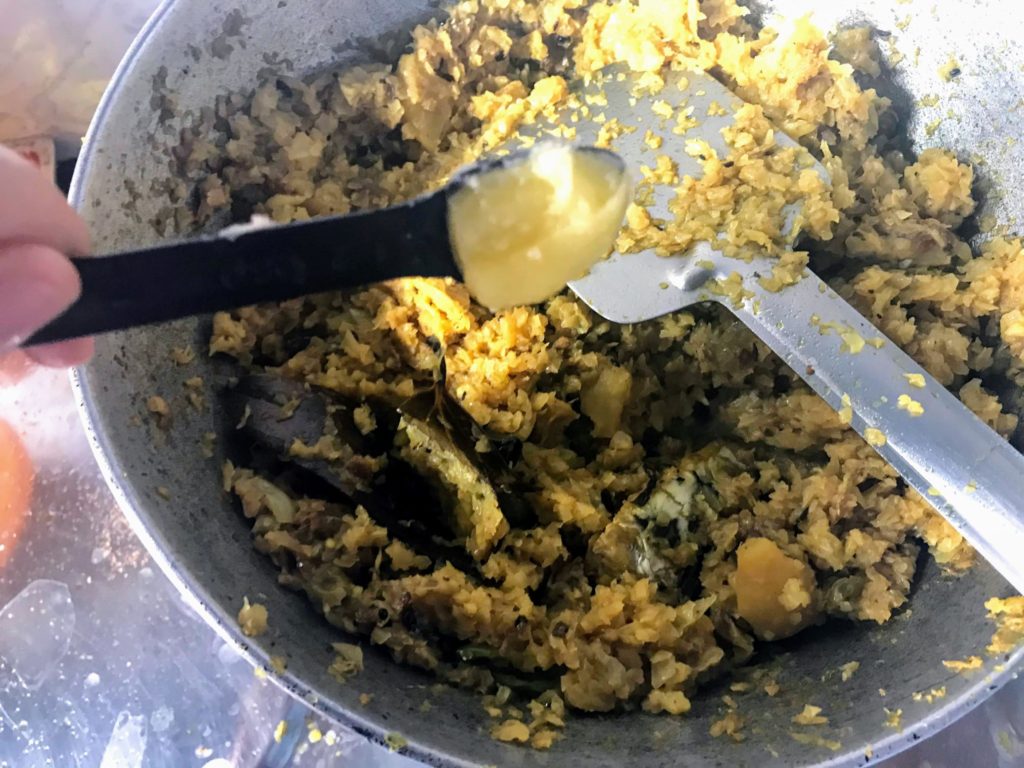
Add ghee and crushed green cardamom pieces.
Tips:
- It’s the size of the cabbage that will decide the quantity of water required for pressure cooking. I have used a medium sized cabbage
- You may use a kadai to fry the fish head. However, you might require little more oil
- For even frying, flip the fish head pieces 3-4 times in between
- Avoid adding extra water to the pan by transferring the pressure-cooked chopped cabbage with a strainer or deep-frying strainer
- Don’t add the pressure-cooked cabbage till the potato pieces are completely fried
- Most of the cooking is done on low flame
